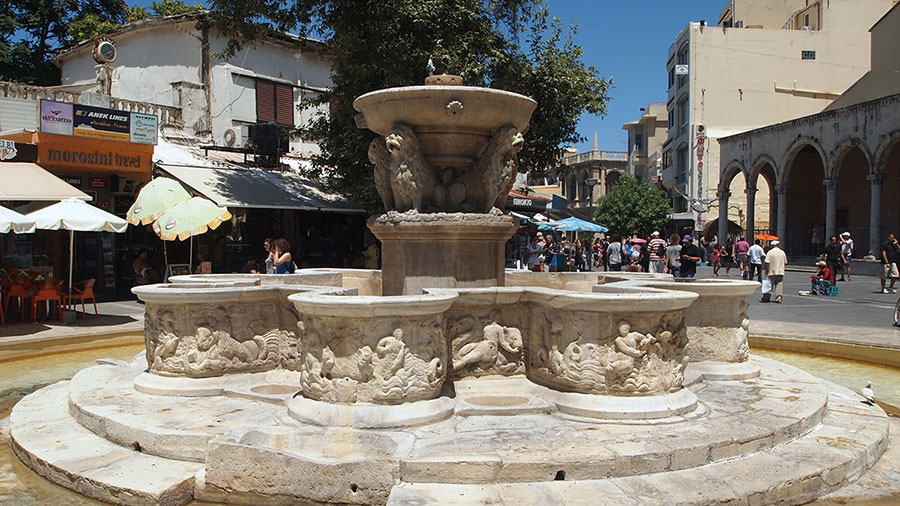Visit the Mythical Palace of Knossos of King Minos and Labyrinth home to the Minotaur. Get to know the largest city and Capital of Crete.
Discover with us the Labyrinth and Palace of Knossos! Skip the long ticket line and with our expert Guides unraveling the Myths and Legends surrounding the site. Next, visit the Archeological Museum of Heraklion which hosts a collection that makes it one of the most important Museums in Europe in its field. Explore the Historical city center of Heraklion and Capital of Crete! The 7th labor of Hercules was performed here, the birthplace of El Greco and Kazantzakis.
Heraklion’s history with stories of its turbulent past and visits to its legendary churches, fountains, and monuments. Walk with us the beautiful city of Heraklion with your professional licensed guide and local.
Get to know Heraklion the largest city of Crete. Visit Heraklion’s major monuments; travel through time and its rich history.
Discover the past and the present of a city that combines old with new. The walking appeals to every visitor, regardless of age. The tour is wheelchair accessible.
Easy walking tour (expect some steps, walk through pedestrian streets), through the city’s most important monuments, providing information about the city’s attractions.
The Archaeological Museum of Heraklion provides a unique opportunity for the visitor to marvel at the findings of the first of civilization in Europe, the Minoan civilization.
The Heraklion Archaeological Museum is one of the largest and most important museums in Greece, and among the most important museums in Europe. It houses representative artefacts from all the periods of Cretan prehistory and history, covering a chronological span of over 5,500 years from the Neolithic period to Roman times. The singularly important Minoan collection contains unique examples of Minoan art, many of them true masterpieces. The Heraklion Museum is rightly considered as the museum of Minoan culture par excellence worldwide.
The museum, located in the town center, was built between 1937 and 1940 by architect Patroklos Karantinos on a site previously occupied by the Roman Catholic monastery of Saint-Francis which was destroyed by earthquake in 1856. The museum’s ant seismic building is an important example of modernist architecture and was awarded a Bauhaus commendation. The colors and construction materials, such as the veined polychrome marbles, recall certain Minoan wall-paintings which imitate marble revetment. The two-storeyed building has 27 galleries, a gallery for audio-visual displays, extensive modern laboratories, a cloakroom, a cafeteria and a museum shop that sells museum copies, books, postcards and slides.
Are you an owner? Contact us today for your property management.
